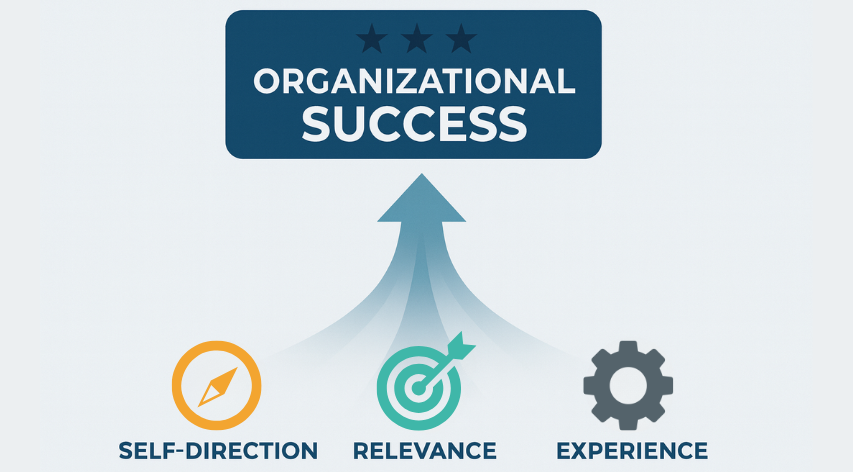Transforming Corporate Standards – Part 4: Knowledge Transfer with On-Demand Metadata

“Knowledge is knowing that a tomato is a fruit; wisdom is not putting it in a fruit salad.” –Miles Kington (2003)
Introduction
Problem: All too often, users of corporate standards and specifications don’t understand the rationale behind a requirement. Without the “why,” two costly patterns repeat:
- Legacy requirements linger: Outdated requirements persist, often born from one-time events or personal bias, keeping costs unnecessarily high
- Deviations get green-lit without context: CAPEX may drop, but reliability issues, risk, and lifecycle cost rise when owners’ engineers lack the insight to weigh tradeoffs in high-pressure, time-sensitive project decisions
Opportunity: By managing specifications as data in a database (see Part 1 of this blog series), we can attach insight to each requirement so that context is available at the source – rather than buried in email threads, PDFs, or memory – which supports efficient knowledge transfer throughout the organization.
Solution: BechtPractices™ delivers the “why” at the requirement level via on-demand metadata, eliminating document bloat while enabling smarter, faster decisions.
Together with Integrated Overlays (Part 2) and Advanced Filtering (Part 3), BechtPractices unlocks the full value of your corporate standards and specifications by delivering:
- External use: Clear, optimized, third party-ready specifications
- Internal use: Deep, role-based, on-demand insight for knowledge transfer and decision-making
Legacy Method Shortcomings Explained
The need for effective knowledge transfer has long challenged our industry – especially as we prepare for the retirement of our most experienced team members.
To avoid the initial problem statement and support knowledge transfer, throughout the 2000’s we have seen specifications morph from concise requirement sets into all-encompassing repositories for corporate knowledge transfer that combine:
- Requirements
- Training material
- Code duplications
- Lengthy narratives meant to preserve intent and interpretation.
The result is bloated, hard-to-use specifications.
To combat this new challenge, some organizations separate requirements from supporting narratives into two distinct documents. While initially helpful to regain concise requirements, this:
- Doubles the size of the collection, adding confusion in use and cost to maintain
- Results in out-of-sync requirements due to out-of-sync maintenance cycles, creating confusion, inefficiency, and additional work to reconcile versions and content misalignment
While well-intentioned, the foundational problem is that managing specifications in Word and PDF documents has turned once-focused specifications into bloated encyclopedias that add cost, confusion, and inefficiency, leading to reduced quality or confusing, out-of-sync collections.

Figure 1: Challenges and Lifecycle of Legacy Knowledge Transfer Methods – Shows how mixing requirements with intent/interpretations using documents adds bloat or results in misaligned insights over time
On-Demand Knowledge Transfer – Metadata Basics
BechtPractices solves the long-standing challenge of specification bloat by providing the content structure for each requirement to include a concise, structured set of metadata.
As shown in Figure 2, the insights attached to a requirement are hidden by default. Color-coded icons indicate that a requirement has associated metadata. By selecting (clicking) an identified requirement, the metadata window expands to reveal the associated insights.
The result: Centrally managed content that provides contextually correct insights without the bloat.

Figure 2: On-Demand Metadata for Knowledge Transfer – Insights are hidden by default and revealed contextually on click, keeping specifications lean
Intent and Interpretation Insights
The two most common knowledge transfer metadata types that are utilized within the BechtPractices system are provided in Table 1.

Table 1: Common Knowledge Transfer Metadata Fields – Summarizes how intent (“driver”) and interpretation (“why”) work together
As shown in Figure 3:
- Intent is a structured picklist (e.g., safety, reliability) that classifies the “driver”
- Interpretation is a free-text paragraph capturing the “why”

Figure 3: Intent and Interpretation Data Types – Intent is a structured picklist (the driver); interpretation is a concise free-text rationale (the why)
Role-Based Communication – Controls and Added Value
BechtPractices deploys an extensive Role-Based Access Control (RBAC) for all functionality within the portal, including access to metadata.
Most organizations provide:
- Third-party access to only the specification and restrict access to the specification metadata
- Approved internal resources access to both the specification and the associated knowledge-transfer metadata
RBAC with on-demand metadata allows organizations to keep internal rationale and insights available to owners’ engineers without exposing it to third parties, unless they would prefer to provide metadata access to identified vendors.
Improved Documentation for Content Owners
During review and development cycles, content owners often generate multiple internal drafts with redlines and group comments. Most of these comments are internal and retained only in early alpha revisions for historical recordkeeping.
Yet within those drafts are often high-value discussion threads – conversations that capture reasoning, interpretation, and decision context critical to understanding the “why” behind requirements.
By managing content within the RDMS, content owners can obtain increased value as detailed in Table 2.

Table 2: RDMS Benefits for Content Owners – Converts redline discussion into searchable interpretation metadata tied to a live requirement
This approach transforms internal conversations during development into lasting, high-value, on-demand knowledge.
Optimized Knowledge Transfer
As noted above, intents are typically managed as configurable picklists, allowing them to be stored as structured data fields.
Leveraging the Advanced Filtering functionality discussed in Part 3 of this series, the BechtPractices RDMS enables users to filter requirements dynamically using toggled views based on these structured data fields.
One of the most common use cases among BechtPractices users is the ability to filter requirements by intent classifications such as “Safety” or “PSM Critical.” Using these filtered views, users can dynamically generate a focused shortlist of non-deviable requirements – a concise summary that can be used for critical design and safety reviews.
This optimized, intent-driven view is a powerful tool for design and safety reviews, ensuring the most critical requirements are front and center to improve efficiency, clarity, and compliance in decision-making.
Increased Organizational Value
Through use of advanced technology, BechtPractices not only increases efficiency with on-demand knowledge transfer, but also provides added value and insights throughout the organization.

Table 3: Value by Stakeholder Role – Highlights benefits for SMEs, C-suite, capital projects, and third parties
Through technology, we can more effectively communicate requirements and transfer knowledge throughout organizations driving improved decision making that results in:
- Reduced lifecycle costs
- Improved safety, reliability, and operational excellence
- Empowered and knowledgeable team members
Next Steps
BechtPractices is more than a platform. It’s a modern solution to better manage critical organizational data that helps engineers and managers work smarter and faster.
- Follow us on LinkedIn for upcoming blogs and platform updates.
- Watch the recording of our global webinar, which includes a detailed demo of BechtPractices in action.
- Request a live demo tailored to your organization’s needs by contacting Jeannie Lewis or Matt Hansen.
Let BechtPractices help you unlock better performance, improved compliance, and stronger project execution – starting with how you manage your standards.
Like what you just read? Join our email list for more expert insights and industry updates.






